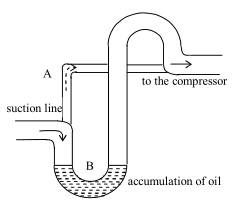Operation with piston and connecting rod removed If some cylinder unit components, such as piston, c...
If some cylinder unit components, such as piston, connecting rod or big end bearing are damaged and
can't be repaired, the following can be done to make emergency operation possible.
(1) Remove the piston, connecting rod and big end bearing of that unit.
(2) Cover lubricating oil bore in crank pin.
(3) Fit a completely assembled cylinder head without the valve push rods .
(4) Disconnect the pilot air pipe to avoid starting air to the cylinder head.
(5) Set the HP fuel pump out of service by blocking pin.
With one cylinder out of operation exhaust gas temperature of the remaining cylinders should not
exceed normal full load temperatures.
If the turbocharger(s) surges, reduce load further to avoid continuous surging.
Engine operation and a piston and connecting rod removed from one or more cylinders, should be
performed only in absolute emergency when no other means are available.
Removal of one or two counterweight (s) may reduce vibrations due to unbalance. Please contact
Stork-Wartsila Diesel in such a case.
When the engine should be operated with one cylinder out of service, the balance of the engine is
disturbed and severe or even dangerous vibrations may occur. The vibration conditions are in practice depending on the type of the installation.
参考解析:
1. To make emergency operation possible in operation with piston and connecting rod removed, the
following can be done except _____.
A. plugging off lubricating oil bore in crank pin
B. fitting the cylinder head
C. withdrawing the piston connecting rod
D. connecting the pilot air pipe to the cylinder head
2. According to the passage, we can infer that “Stork-Wartsila” probably means_____.
A. a type of diesel
B. a shipchandler
C. a manufacturer
D. an agent
3. When the engine should be operated with one cylinder out of service, _____.
A. please contact Stork-Wartsila
B. exhaust gas temperature of the other cylinders should not exceed normal
C. dangerous vibrations will occur
D. fit a completely assembled cylinder head with the valve push rods
4. To avoid continuous surging of the turbocharger(s), _____.
A. remove two counterweights
B. reduce the load further
C. resort to other means
D. cover the lubricating oil bore in the crank pin


 百度扫一扫练题
百度扫一扫练题
 关注千题库公众号
关注千题库公众号








